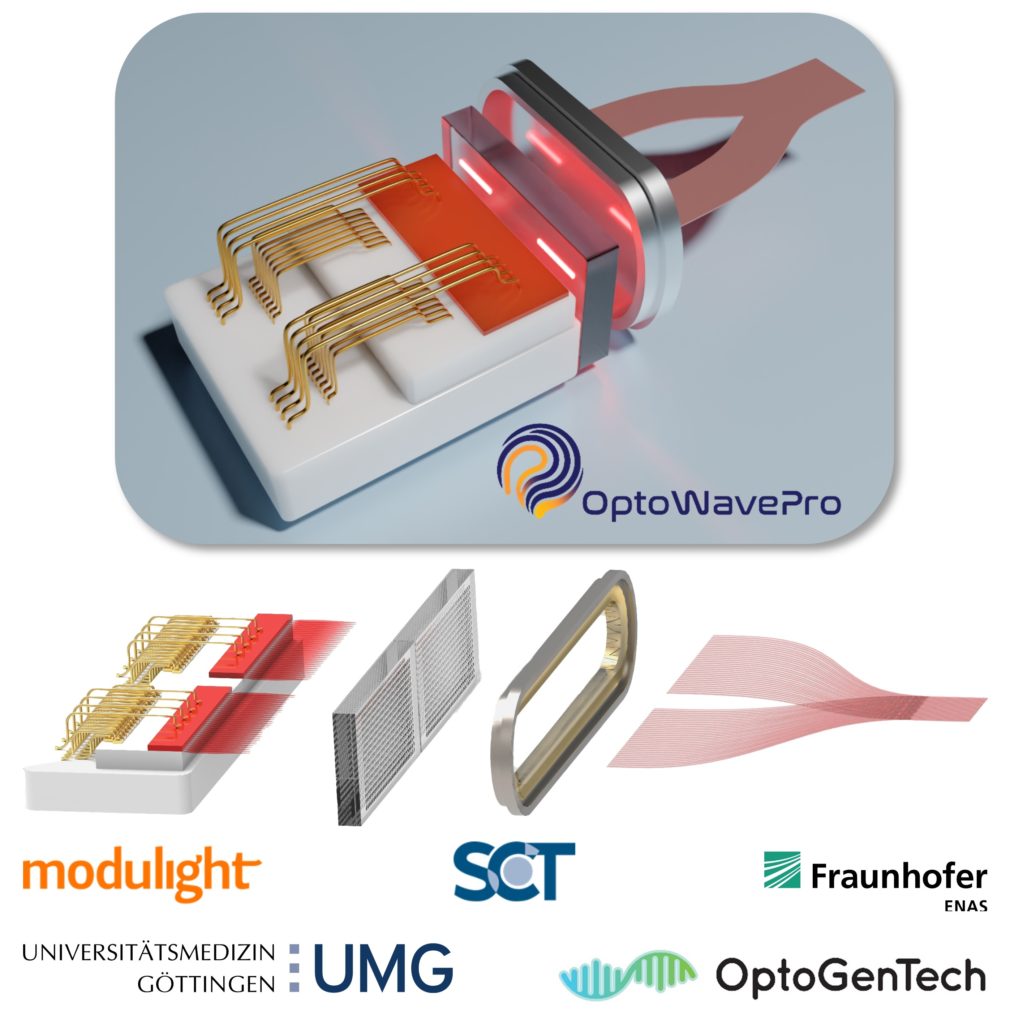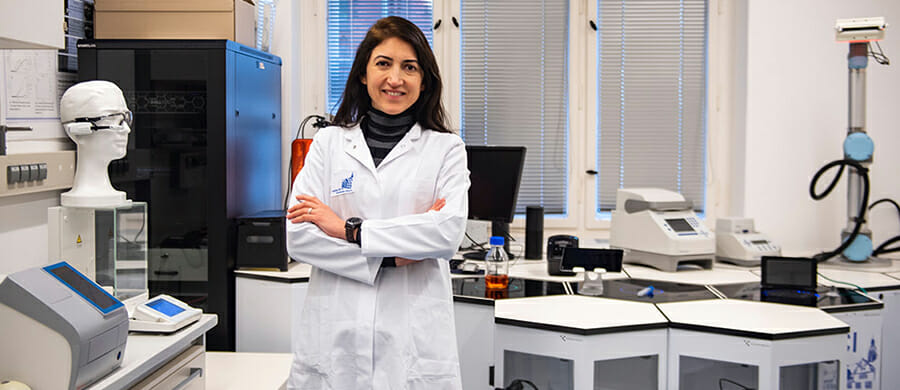DATA & FACTS
Project
2024-2027
Scientific contact
Prof. Dr. Tobias Moser
EU-Funding line
EIC Transition
Projektleitung: Prof. Dr.-Ing. Arno Kwade
Projektname: „Li-Ion Pilot Lines Network“ (LiPLANET)
Keywords: Energie, Mobilität, Partner
European Innovation Council funds development of the optical cochlear implant with 2.5 million euros
International cooperation project “OptoWavePro” coordinated by the University Medical Center Göttingen (UMG) receives 2.5 million euros over a period of three years from the European Innovation Council’s “EIC Transition” funding programme for the development of the optical cochlear implant to restore hearing in humans.
Scientists from the University Medical Center Göttingen (UMG), OptoGenTech GmbH, which was spun off from the UMG in 2019, the Fraunhofer Institute for Electronic Nano Systems ENAS in Chemnitz, the Finnish company Modulight and the French company SCT Ceramics are receiving 2.5 million euros for the development of the optical cochlear implant to restore hearing in humans. The funds for the three-year “OptoWavePro” project come from the “EIC Transition” funding programme of the European Innovation Council (EIC). The EIC Transition funding specifically supports small and medium-sized companies, start-ups and organisations to transform projects from basic research into marketable products.
The “OptoWavePro” project is coordinated by Prof Dr Tobias Moser, Director of the Institute of Auditory Neuroscience at the UMG and co-founder of OptoGenTech, and builds on his previous work on the development of the optical cochlear implant. This special hearing implant is designed to translate incoming sound information into light signals, which in turn specifically activate the nerve cells in the cochlea of deaf and hard-of-hearing patients. As light can be focussed better than electrical signals as in conventional cochlear implants, “hearing with light” promises better hearing quality. “With the expertise of this research consortium in the fields of medicine, medical technology, semiconductor technology and biotechnology, we are a significant step closer to the clinical application of the optical cochlear implant,” says Prof Moser.
Dr Daniel Keppeler, Managing Director and also co-founder of OptoGenTech and visiting scientist at the Institute of Auditory Neuroscience at the UMG, adds: “This special funding enables us to further develop our still young start-up economically in addition to the technology. We get access to exclusive coaching and an extensive network of entrepreneurs.” To date, OptoGenTech has been financed by the high-tech incubator Life Science Valley in Göttingen from state funds.
Projekt “OptoWavePro”
“OptoWavePro” aims to change healthcare in the field of hearing. The development of an optical cochlear implant promises to improve hearing restoration beyond current solutions. This new technology uses light to stimulate the auditory nerve, which represents a significant advance over traditional electrical stimulation methods and hearing implants.
The innovative approach involves combining an implantable medical device with gene therapy. The introduction of light-controlled ion channels into the auditory nerve cells enables these cells to be precisely stimulated by light (optogenetics), bypassing defective or missing hair cells. Studies on animal models promise that hearing with light provides a significantly more natural auditory impression than the electrical cochlear implants used to date.
In the “OptoWavePro” project, the UMG and OptoGenTech GmbH are contributing their extensive expertise in medicine and biotechnology to the development of the optical cochlear implant. In addition to testing in animal models, UMG is focussing on the production of a titanium housing that will enable the implant to be used safely and stably in humans for decades. OptoGenTech designs and integrates 3D-printed lenses that are used to introduce the light into the waveguides that are installed in the titanium housing and transmit the light to the cochlea or auditory nerve cells. Other important interim goals include the development of the authorisation strategy for the optical cochlear implant and the creation of a concept for possible future reimbursement by health insurance companies.
The company Modulight will contribute its medical technology knowledge and expertise in the field of miniaturised laser diodes, which are capable of converting electrical energy directly into light, to the project. The Fraunhofer Institute for Electronic Nano Systems ENAS will contribute its experience in microtechnology for the production of tiny waveguides, and the company SCT Ceramics will contribute optical components such as specialised sapphire windows, which have very good optical properties to guide the light accurately, stably and safely out of the titanium housing. “This represents an extraordinary opportunity to bring together leading technology innovators to develop a state-of-the-art optical stimulator for human use,” says Dr Christian Goßler, technical leader of the project and co-founder of OptoGenTech.

Date:
2024
Das könnte Sie auch interessieren …

Projekt: BITS – BICyCLES and its
Bicycles and ITS (BITS) ist ein neues Projekt zum Thema Fahrrad und ITS (intelligente Transportsysteme), das darauf abzielt, die CO2-Emissionen um 9 % zu senken und die Fahrradnutzung in den Zielgruppen um 10 % zu steigern! Eine Verlagerung des Verkehrs auf umweltfreundliche Verkehrsmittel ist dringend erforderlich, da Verkehrsstaus, …

ProjeKt: decades
Die chemische Industrie steht derzeit vor der herausfordernden Transformation, klassische, auf Erdöl basierende Herstellungsprozesse von Chemikalien durch nachhaltige, biobasierte Produkte im Sinne einer zirkulären Bioökonomie zu ersetzen. Insbesondere Lösungsmittel spielen in der chemischen Industrie entlang der gesamten Produktionskette eine…
